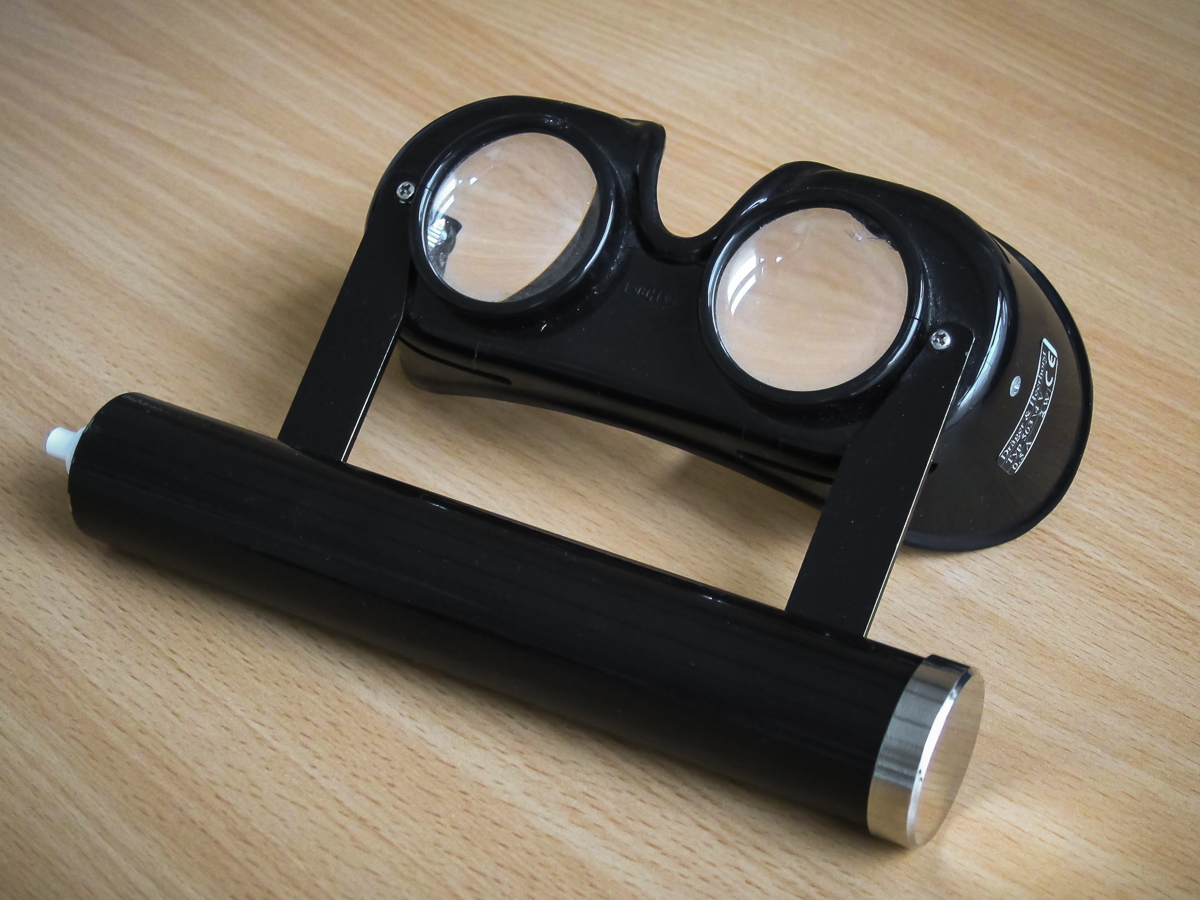Frenzel Goggles on:
[Wikipedia]
[Google]
[Amazon]
 Frenzel goggles are a
Frenzel goggles are a
 Frenzel goggles are a
Frenzel goggles are a diagnostic tool
Diagnosis is the identification of the nature and cause of a certain phenomenon. Diagnosis is used in many different disciplines, with variations in the use of logic, analytics, and experience, to determine "cause and effect". In systems engineer ...
used in ophthalmology
Ophthalmology ( ) is a surgical subspecialty within medicine that deals with the diagnosis and treatment of eye disorders.
An ophthalmologist is a physician who undergoes subspecialty training in medical and surgical eye care. Following a medic ...
, otolaryngology
Otorhinolaryngology ( , abbreviated ORL and also known as otolaryngology, otolaryngology–head and neck surgery (ORL–H&N or OHNS), or ear, nose, and throat (ENT)) is a surgical subspeciality within medicine that deals with the surgical a ...
and audiovestibular medicine for the medical evaluation of involuntary eye movement (nystagmus
Nystagmus is a condition of involuntary (or voluntary, in some cases) eye movement. Infants can be born with it but more commonly acquire it in infancy or later in life. In many cases it may result in reduced or limited vision. Due to the invol ...
). They are named after Frenzel, a German physician.
Usage
The purpose of thegoggles
Goggles, or safety glasses, are forms of protective eyewear that usually enclose or protect the area surrounding the eye in order to prevent particulates, water or chemicals from striking the eyes. They are used in chemistry laboratories and ...
is to disable the patient's ability to visually fixate on an object while at the same time allowing the examiner to adequately visualize the eye. This is done by using high-powered (+20 diopter
A dioptre (British spelling) or diopter (American spelling) is a unit of measurement with dimension of reciprocal length, equivalent to one reciprocal metre, 1 dioptre = 1 m−1. It is normally used to express the optical power of a lens or cur ...
s) magnifying glasses with an illumination system. With such a high-powered lens, it is unlikely that the patient can adequately focus and visually fixate on an object to suppress nystagmus
Nystagmus is a condition of involuntary (or voluntary, in some cases) eye movement. Infants can be born with it but more commonly acquire it in infancy or later in life. In many cases it may result in reduced or limited vision. Due to the invol ...
.
External links
{{Reflist Diagnostic neurology Diagnostic ophthalmology Ophthalmic equipment Goggles